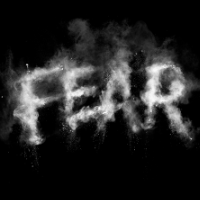A Tale of Two Cities Faced with the Same “Terrorist” Threat

It all came down to credibility when officials in New York City and Los Angeles received e-mails threatening a terrorist school attack on Tuesday. L.A. police, educators and city officials said it was credible and shut down the giant Los Angeles Unified School District (LAUSD) and sent 640,000 bewildered students home to panicked parents during finals week.
New York officials said it wasn’t remotely credible, veritably laughed in the face of danger and questioned the judgment of their counterparts on the West Coast. Later in the day, the FBI determined it was not a credible threat.
L.A. got the e-mail Monday night via a computer server in Frankfurt, Germany, that dozens of terrorists with assault rifles, nerve gas and backpacks full of explosives were headed for multiple schools. The e-mail mentioned the school district precisely by its full name, which officials thought added to its veracity.
A New York education official received a similar e-mail hours later, allowing them to assess it in light of an earlier threat.
Southern California has been the epicenter of terror fears since 14 people were gunned down in San Bernardino two weeks ago. The Los Angeles Times ran special sections covering the attack for days afterward and still regularly uses multiple stories on its front page. Much of the reporting is about how terrifying the attack was and the unsettling after-effects of the ordeal. New York is, of course, where the twin towers were felled on September 11, 2001.
The decision to close the schools was made by LAUSD Superintendent Ramon Cortines, who said he had no choice. Mayor Eric Garcetti and Los Angeles Police Department (LAPD) Chief Charlie Beck concurred, while carefully pointing out it was not their call. Estimates are the closure will cost the cash-strapped district at least $29 million.
“I as superintendent am not going to take a chance with the life of a student,” Cortines said. Ironically, one student may have died as a result of the shutdown when he was struck by a car on a street by his charter school.
L.A. officials seemed more inclined than New Yorkers to embrace the 1% Doctrine opined by former Vice President Dick Cheney when talking about a nuclear threat from Pakistan. “If there's a 1% chance that Pakistani scientists are helping al-Qaeda build or develop a nuclear weapon, we have to treat it as a certainty in terms of our response. It's not about our analysis. ... It's about our response.”
New York Police Commissioner William J. Bratton, a former chief of LAPD, said the analysis mattered, decided it was a “hoax” and chided L.A. for its “significant overreaction.” New York Mayor Bill de Blasio said, “There was nothing credible about the threat. It was so generic, so outlandish and posed to numerous school systems simultaneously.”
The e-mail also lower-cased “Allah.” Bratton said, “The language in the e-mail would lead us to believe that this is not a jihadist initiative. That would be incredible to think that any jihadist would not spell Allah with a capital ‘A.’ ” He likened the threat to a recent plot line on the FX television series “Homeland” involving a sarin gas attack in Berlin.
For Californians, the risk of not acting was too great. For New Yorkers, the risk of over-reacting loomed larger. Mayor de Blasio said, “We will stay aware, we will stay involved, but at all costs cannot start overreacting to what will probably be a series of copycat-type initiatives.”
Indeed. And at $29-million a pop they could tax more than the nerves of a city.
–Ken Broder
To Learn More:
Emailed Threat Closes Schools in Los Angeles, While New York’s Stay Open (by Adam Nagourney, Richard Pérez-Peña and J. David Goodman, New York Times)
L.A. Schools to Reopen Wednesday; Threat Against Schools Was “Not Credible,” Officials Say (by Veronica Rocha , Hailey Branson-Potts, Stephen Ceasar and Richard A. Serrano, Los Angeles Times)
LA Admits Threat “Not Credible;” Classes Resume Wednesday (by Matt Reynolds, Courthouse News Service)
Facing the Same Threat, Schools in Los Angeles, New York Take Different Tacks (by Diana Crandall, Emma Brown and Mark Berman, Washington Post)
- Top Stories
- Controversies
- Where is the Money Going?
- California and the Nation
- Appointments and Resignations
- Unusual News
- Latest News
- California Forbids U.S. Immigration Agents from Pretending to be Police
- California Lawmakers Urged to Strip “Self-Dealing” Tax Board of Its Duties
- Big Oil’s Grip on California
- Santa Cruz Police See Homeland Security Betrayal in Use of Gang Roundup as Cover for Immigration Raid
- Oil Companies Face Deadline to Stop Polluting California Groundwater





